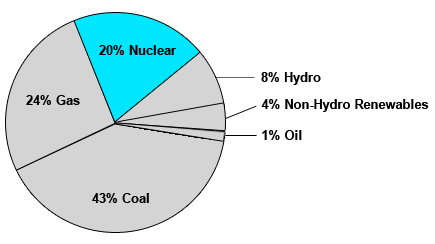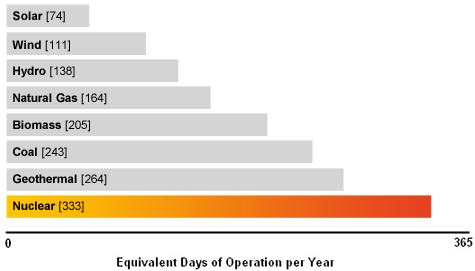Nuclear energy relies on the enormous amount of energy contained in the nucleus of an atom. In nuclear fission, atoms are split apart to form smaller atoms, releasing energy. Nuclear power plants use this energy to produce electricity.
The heat given off during fission in the reactor core is used to boil water into steam, which turns the turbine blades. As they turn, they drive generators that make electricity.
Nuclear power plants are highly reliable generation sources, often operating for 18-24 months without shutting down. Further, because combustion is not part of the process, there are minimal emissions. Compared to other large-scale power plants, nuclear plants are generally more expensive to construct due to safety and security requirements and a lengthy licensing process, but are less expensive to operate due to low and stable fuel prices. However, nuclear plants generate radioactive nuclear wastes that require safe storage and disposal over extended time periods.
Where Does Electricity Come From?

What Plants are Used the Most?
